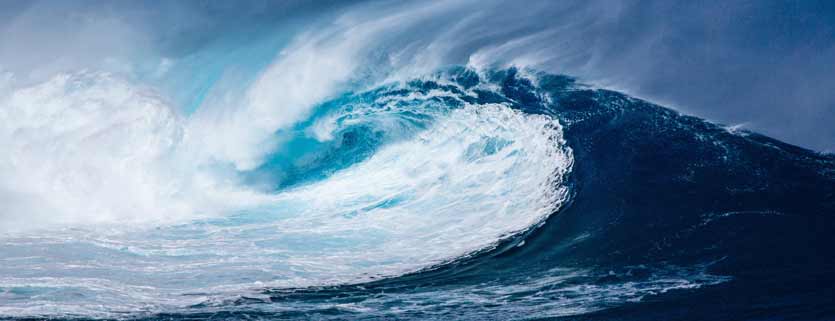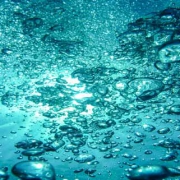Warming waters …
/0 Comments/in Long Articles/by Rudolf HuberI grew up with tales of aliens that had visited Earth in ancient times. Crazy? It sure is in many ways but my father was an avid reader of the books from the Swiss author Erich von Däniken.
Von Däniken scanned the globe for traces of those alien visits. That’s how I got in contact with the Lines of the Nazca plain or the hidden architecture of the pyramids. Soon I started to have deep doubts. Why would the aliens hide from us? Where have they gone?
But the places that von Däniken explored stayed with me. And many stories from his books as well. He must have spent days and weeks bent over ancient manuscripts and tales to find traces of his aliens. And that’s how I learned about the war between the Hindu god Krishna and the evil King Salva.
Their skirmish ground was the ancient city of Dwarka on the Indian Subcontinent. It’s a coastal city right on the Arabian Sea. The Mahabharat (one of the two major Sanskrit epics) describes in detail how the evil King attacked the city with a flying ship using energy weapons. Lord Krishna counterattacked and the epic describes this as arrows roaring like thunder and shining like rays.
No wonder Dwarka is one of the pilgrim grounds of ancient alien theorists.
A nice story – ain’t it? But sure only mythology.
Then, between 1983 and 1990 an Indian marine excavation team unearthed the remains of the ancient city of Dwarka deep underwater. And they found the city built exactly as it was described in the Mahabharat. Never mind that ancient Dwarka disappeared under the waves almost 5500 years ago. Long before Climate Change was even an issue.
There are many sunken cities around the world. Some have sunken as a result of volcanic activity, but often the land simply sunk into the water. This seems to be the case with Dwarka. It’s hard to say those things with certainty after 5500 years. Numerous pre-historic sites around Dwarka show that a large stretch of coast on which Dwarka was situated started to sink slowly into the sea by at least 9000 BCE.
Sea levels are always changing. They always have. The land on which we live also moves beneath our feet. At school, we learn that the continents move as tectonic plates. But there is much more. Land sinks – other parts get built up by sedimentation. Old Sumerian texts describe some of the old cities as being on the sea and having harbors. Today, most of those cities are far inland. The Schatt el Arab built up new land with the material his two confluents Euphrates and Tigris carried down.
If coastlines have always changed, why is this now a bad thing? Rising waters and changing coastlines are the most natural thing there is.
Today’s Climate Alarmists have a simple theory. A warming planet will melt the ice on Antarctica and on Greenland. The extra water will make the sea level rise submerging our coasts. And because for them, humans are responsible for this warming, it’s us who cause our coastal cities to disappear. To them, the Earth is a bathtub.
Simple. Ain’t it?
But according to them, there is worse. The warming planet also warms those rising waters plus it makes them more acidic. And this gives rise to a totally new host of issues we shall deal with now.
Let’s focus on acidification for a second. The term itself is a misnomer. The world’s oceans are slightly alkaline. On a PH scale from 1 to 15 with one being a strong acid and 15 being a strong base, seawater sits at 8. Just a tick away from neutral.
Now back to chemistry class. What happens when you mix an acid with a base? Exactly right – they neutralize each other. If both are equivalent to each other, you get neutral. If you pour some acid into a lot of alkaline liquid, it just becomes a little less basic but it still remains alkaline.
CO2 reacts with seawater and forms an acid that then comingles with it. This acid is capable to dissolve the shells of lots of sea-life like crabs or crayfish. Not a pretty mental picture.
But those animals never get in touch with acid. The acid produced adds about 0,08% acidity to the seawater which results in 0,08% less alkalinity. A base with a value of 8 becomes a base with a value of 7,92 on the scale. No acid, no dissolving crabs.
But acidification is a much more dramatic word even when that’s not what really happens.
But water warming is still out there. Ain’t it?
There are countless reports on coral bleaching and that the reefs are dying as a result of warm water. Let’s put that to the test. If warm water kills corals, then corals must have a very short evolutionary history.
Why?
Well, the last couple of thousand years have been a succession of various warm times and cold times. The two most famous of which are the Medieval and the Roman Climate Optima. Those are by no means the only ones. And no even the warmest ones.
But they are the most recent ones – aside from the current Climate Optimum of course.
BCE Climate Optima tended to be warmer still. The two big Holocene Climate Optima stretched over hundreds of years. All of them featured much warmer average temperatures than now.
Hence, ocean water at those times must have warmed up a great deal more than it does now.
If the theories of Climate Alarmists would hold water (I could not resist the pun), all corals should have died at those times. At the latest. But they did not.
The oldest known reef on Earth is the Chazy Reef on the Isle La Motte on the US-Canadian border. It dates back 480 million years. Just for reference, this was at the end of the Cambrian explosion and the beginning of the Ordovician Period. Dinosaurs started to roam the planet just about 250 million years later.
When this reef came into existence, average temperatures on Earth were around 10 degrees warmer than today. And remained so for hundreds of millions of years.
How have those corals survived this apparent ordeal? How could they even have evolved in such warm waters?
Corals are bleaching, and reefs die. I suppose that has happened since those lifeforms exist. Just now we have rephrased the script to that being something unnatural. Or that corals and crabs cannot deal with warmer waters when they have done so since the dawn of time.
How have they done that in the past?
I am just asking questions? Maybe a marine scientist out there is able to give my an answer that brings Climate Alarmist dogma and those reasonings under one roof. Maybe I don’t understand the science enough.
But until there is an answer that a non-scientist can understand, I suppose that warming waters are much less of a real issue than those people want to make us believe.
While we are at it, let’s dip into another little bit of misinformation we are served at every twist and turn.
In January this year, The Guardian wrote that Ocean temperatures have hit a record high ever. Never mind that those temperature changes are in a hundredth of a degree Celsius. And I have strong doubts that there were many stations that were capable to reliably measure such minute temperature changes 100 or more years ago.
Besides, more than two times as much sea surface than land surface covers the planet. People often have a very distorted idea of how massive the sea really is.
Siberia is perceived to be endless but in the endless realm of the oceans, it would disappear.
Today, about 3800 free-drifting Argo floats measure temperature. Such a small number over that vast expanse, that’s homeopathic. Let’s not forget that just a few decades ago this number was far lower and the instruments were much less accurate.
On top of that, we have essentially nothing from before WW1. But according to some clairvoyants, we live trough the warmest ocean water in 150 years. Yeah right.
















Leave a Reply
Want to join the discussion?Feel free to contribute!